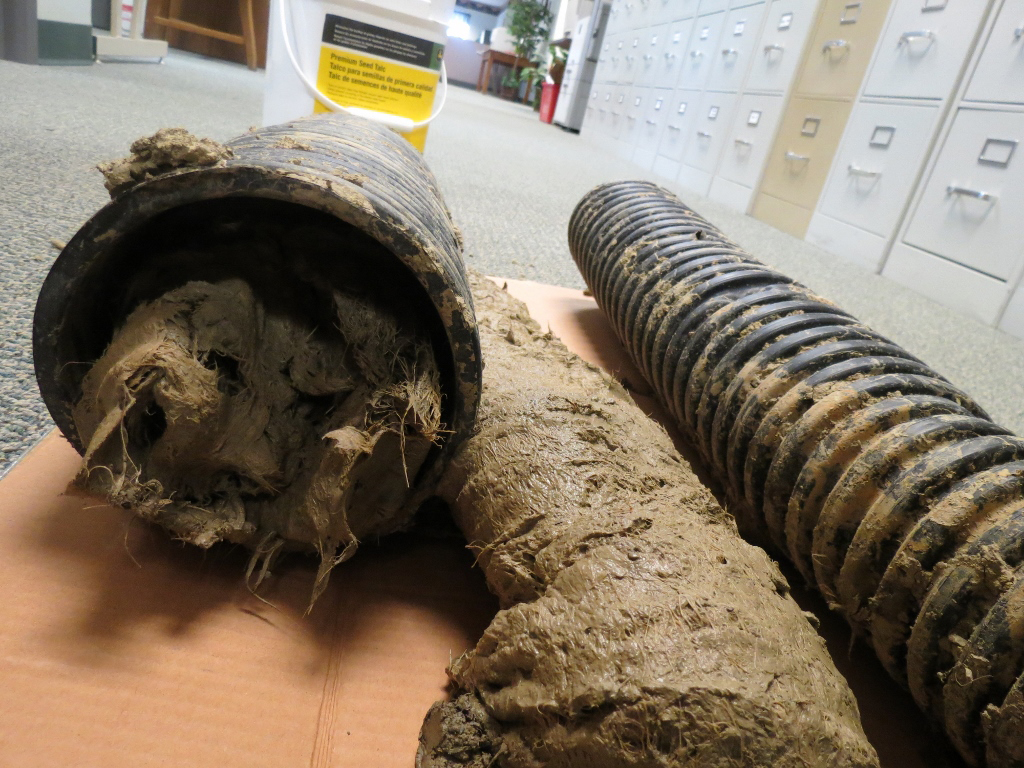
Reports of roots clogging tile drains increased dramatically in early 2016 and investigations are underway to determine why, said Eileen Kladivko, professor of agronomy at Purdue. She and two other specialists from the Midwest have published a report -Agricultural Tile Drains Clogged with Cover Crop Roots? - to address potential causes and remedies for the problem.
Many of the roots are believed to come from cover crops, which grew exceptionally well during the warm winter and wet spring and grew deeper roots than usual, Kladivko said.
Compounding the problem of roots growing into the pipes, heavy rainfall may have washed large amounts of sediment and crop residue into some tile systems through surface risers, which are installed in low, wet areas to let surface runoff enter the tile drains. As these substances accumulate in dips, bumps or other imperfections in the tile, they can restrict the flow of water through the pipes, creating a nutrient-rich place for roots to grow.
Topography, ground characteristics and tillage practices that create smaller pieces of residue are other factors that likely contribute to the problem.
There are a few things that farmers can do to reduce clogging and determine if there are blockages, Kladivko said. Small imperfections or irregularities in the system can be repaired during routine maintenance, and internal couplers, which may catch sediment and residues within the pipe, can be replaced by external couplers. Installing a filter or sock on surface risers may reduce the amount of soil and residue material that enters the system. Also, simply sharing reports and photos of clogged drains can help investigators look for patterns and determine what conditions may increase the risk of root growth into the tile system.
For more information or to report root clogging in tile systems, contact Kladivko at kladivko@purdue.edu, or Barry Fisher of the U.S. Department of Agriculture Natural Resources Conservation Service at barry.fisher@wdc.usda.gov.





